Share This
When in Rome, do as the Romans do. I wanted to follow that dictum on my recent trip to Italy, but where to start? Should I wear expensive leather clothes? Not my thing. Talk endlessly on a telefonino? Not with high international cell-phone rates. Drive like a maniac and triple park? I didn’t even have a rental car. Learn to cook like an Italian chef? Ah, now, that’s the kind of Roman behavior I’d love to emulate.
So before I left, I researched cooking class possibilities on the web. “We start at 10 AM in the Testaccio quarter for a little gastro-history and our grocery shopping,” said one American cookbook author who gives classes in Rome, “then take the bus home to near the Colosseum for cooking and lunch, ending somewhere around 3.30 or 4 PM. We have no set menu. We just buy and cook what we like, as long as it’s in season and in keeping with local food traditions. We usually concentrate on vegetables and pasta.” Cool. “The charges are €250 for one person, €225 each for two…” Ouch.
On to the next one, another expat American who could offer actual cooking only for a group of four or more, but suggested a “culinary walk” instead: “In picturesque, historic Rome you will explore morning markets, shopping for delicacies and wine, while you learn about Roman specialties and how to find and choose the freshest ingredients. During your culinary walking tour you will visit a homemade pasta store, a delicatessen, bakery, wine store and two food markets: old open-air Roman style and modern Roman style.” That sounds cool too… but not at €210. With each Euro now costing about $1.50, these options would break my budget bigtime.
Finally I found just what I wanted: a small class with Italian chef Andrea Consoli, at his family’s restaurant in Rome’s Trastevere neighborhood. For just €35 per person, my husband and I could join two other couples for an intimate class where we would work collectively to cook a meal, then sit down together to enjoy the results of our labors. The class was virtually free, since it would serve as our main meal for the day.
Monday arrived, and we showed up at Le Fate (“The Fairies”) restaurant at 11:30 a.m., along with Stacey and Wyatt from Missouri, and Josephine and Jackie from Seattle. Chef Andrea, 32, grew up in a restaurant family and has been cooking professionally for half his life, not only in Italy but in San Francisco, New Jersey, and Australia, where he learned English. Though his rapidfire delivery is punctuated by whistles and gestures when a word momentarily escapes him, he’s a great teacher and we understand everything he carefully explains. He begins by noting the difference between a cook and a chef. “A cook shows up at 5:00 and works until midnight, just following recipes. A chef goes to the market, builds a menu in his head from what’s available, then creates an experience for his diners, based on his relationship with the food.” There’s a dreamy, philosophical look in his eyes that perhaps explains how he can keep up the grueling pace necessary to run a small restaurant.
A minute later, however, it’s down to business. “We start with sofritto,” he says, and sets Stacey peeling onions while I chop carrots and celery for the aromatic base of so many Italian sauces. In this case, we’re making a rich meat sauce (sugo di magro) with short ribs and sausages, for the gnocchi Josephine requested. Andrea encourages his guests to suggest dishes they’d like to create, and we’ve decided on a menu of fried pumpkin blossoms, gnocchi, saltimbocca à la Romana, and tiramisu. The gnocchi sauce needs to simmer for three hours, so we’ve started it first, puttering about our assigned tasks while Andrea discourses on the importance of “extra veer-jeen oleev oil” and the nutrients in the skin of garlic.
Soon the sauce is bubbling, along with two big pots of potatoes. “The best gnocchi come from old potatoes,” says Andrea, “because they’re drier. And you must boil them with the skins on, so they won’t absorb too much water.” Meanwhile, we carefully remove the stamens – that interior upright pillar – from a few dozen pumpkin blossoms, which are bigger than the traditional fiori di zucca, or squash blossoms. Andrea slices prosciutto paper thin, and shows us how to wrap the air-cured ham around thin sticks of dry mozzarella – “don’t use milky mozzarella, it’s no good for frying” – to stuff the blossoms. We take turns whisking a batter made of flour, beer, olive oil and salt, with ice cubes added “to make the starch crystalize, for better crunch” then stick the batter in the fridge.
The two husbands have been fiddling with their cameras, but now Andrea puts them to work too, peeling and mashing the boiled potatoes, while the rest of us assemble bite-size pieces of saltimbocca. As we sandwich a bit of prosciutto and some mild cheese in thin layers of beef, pinned with a sage leaf and a toothpick, Andrea explains that beef is generally used instead of veal in Roman cooking, as Rome’s culinary history is la cucina povera, cooking of the poor. Without money to spare, Romans couldn’t sacrifice the potential of a full-grown cow or steer in favor of a veal calf.
Once the saltimbocca has been assembled, it’s on to the tiramisu. The big secret here, according to Andrea, is to dunk the ladyfingers unimaginably briefly in the espresso. In case we don’t believe him, he dips one just a second too long – “You see! Mush!” – and in no time we’ve filled a dish with the little sponge cakes and are topping it with a creamy mixture of beaten egg whites, egg yolks, confectioner’s sugar, and mascarpone cheese. This dish heads for the fridge, too, where it will await its final dusting of cocoa powder just at serving time.
It’s time for another sauce now, this one a quick mix of fresh cherry tomatoes, basil, olive oil, salt, garlic and almonds, combined in a tall beaker with an immersion blender. We’ll use this to dip our fried pumpkin blossoms, which Andrea’s now starting to fry in the deep-fryer. “Hold them by the back end and dip the tops in the oil to fry first. Then let go, and they’ll fry right side up, as the lighter, cooked tops will rise to the surface of the oil,” advises Andrea.
Our final task is to create the gnocchi, mixing the mounds of mashed potatoes with flour, egg, and a pinch of salt. I volunteer to knead the dough, to get the feel of it as the flour is slowly incorporated. When it’s done, we all roll out little snakes (harking back to our Play-Dough days), cut them, and indent them with fork tines, to give the sauce more nooks and crannies to slide into.
Now Andrea shoos us out of the kitchen. Ristorante Le Fate does not serve lunch, since Andrea holds his cooking classes daily, and we have the whole place to ourselves. We settle on three sides of a table for eight, sipping prosecco and chatting, while Andrea brings out the first course: crispy, delightful squash blossoms with a fresh tomato dipping sauce. “Normally, we would stuff the blossoms with fresh anchovies and cheese, but you cannot get good anchovies in the U.S., so we have used prosciutto,” says Andrea. The blossoms are ethereal, and we must exercise the strictest discipline to save room for the next three courses.
Gnocchi are next, swimming in our delicious sauce. Andrea also offers a wine-tasting option for €20, which Lew and I decide to split – four half-glasses of wine will be plenty for each of us. The gnocchi are paired with a Latour a Civitella, a delightful white wine, which gives way to an Italian Shiraz with the saltimbocca. “Saltimbocca means ‘jump in your mouth!’ ” laughs Andrea, as he sits with us briefly before returning to the kitchen, and indeed the little bite-size morsels of meat, cheese and sage make a party in our mouths.
Our meal has already gone on for an hour, as the six of us become better acquainted and Andrea pops in and out, bringing new dishes and wines in between his work preparing for the 40 covers he will serve a few hours later at dinner. Finally, out comes the tiramisu, on individualized plates, with a small glass of rosolio, an after-dinner liqueur that’s less fiery than the better-known grappa. “For the men, the flavor is bay leaf, for the women, cinnamon.” We taste each others’ glasses in defiance of Italian sexism, and find both flavors delicious and a fitting end to a wonderful meal.
Andrea comes out to say goodbye, clearly busy with his evening prep. We joke that our efforts should have produced plenty of leftovers he could serve for dinner. “Oh no!” he exclaims. “Always the food from my cooking classes goes to a local program to feed the poor.” How nice. We leave feeling we’ve not only eaten a good meal, but done a good deed for a local Rome food pantry. If you’re in Rome soon, definitely try to fit in a class with Andrea Consoli. But act quickly! The Consoli family is planning to leave the tiny kitchen of Le Fate behind and open a new restaurant in Umbria, sometime in the future. http://www.cookingclassesinrome.com/
- Cindy

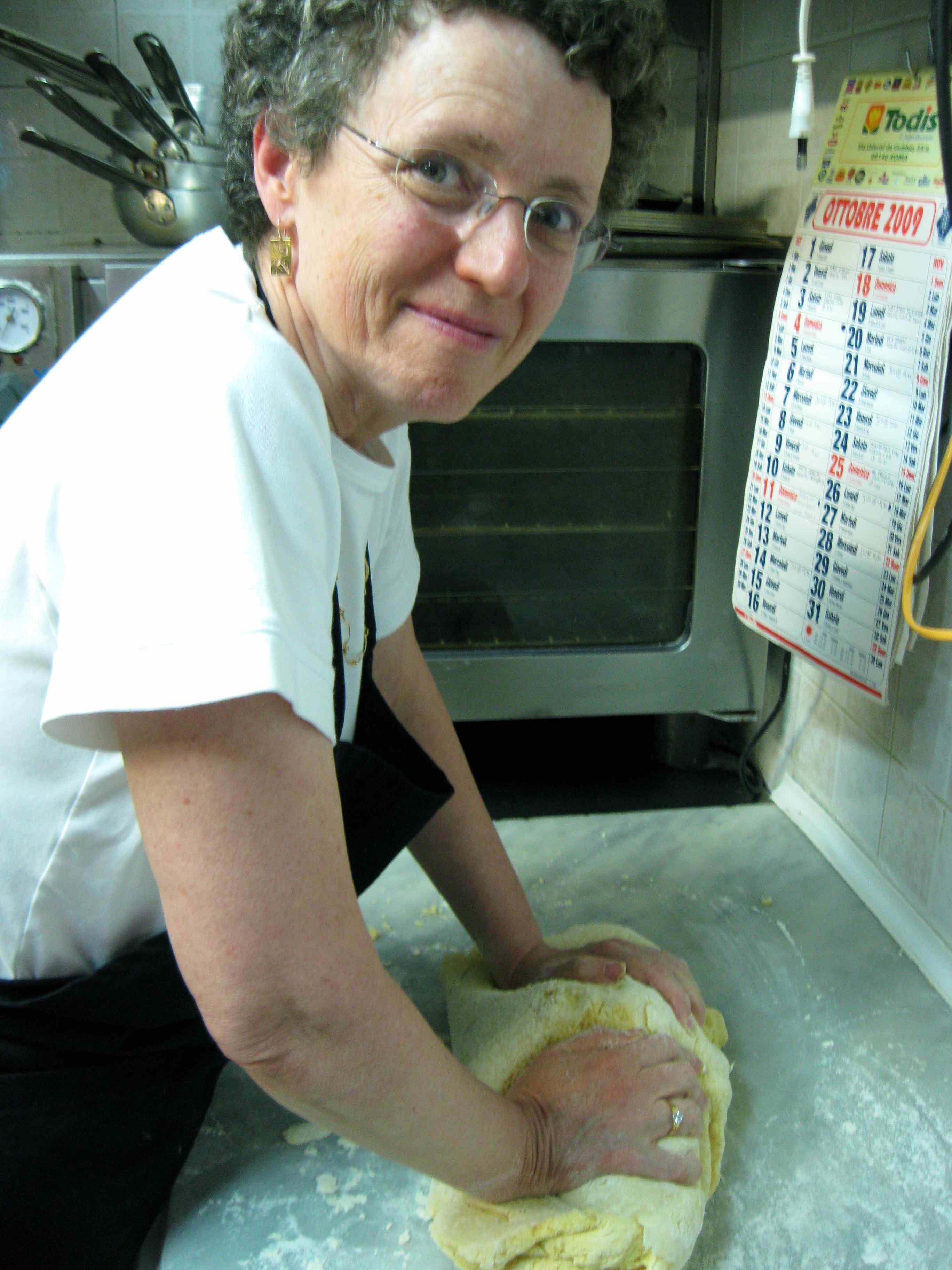
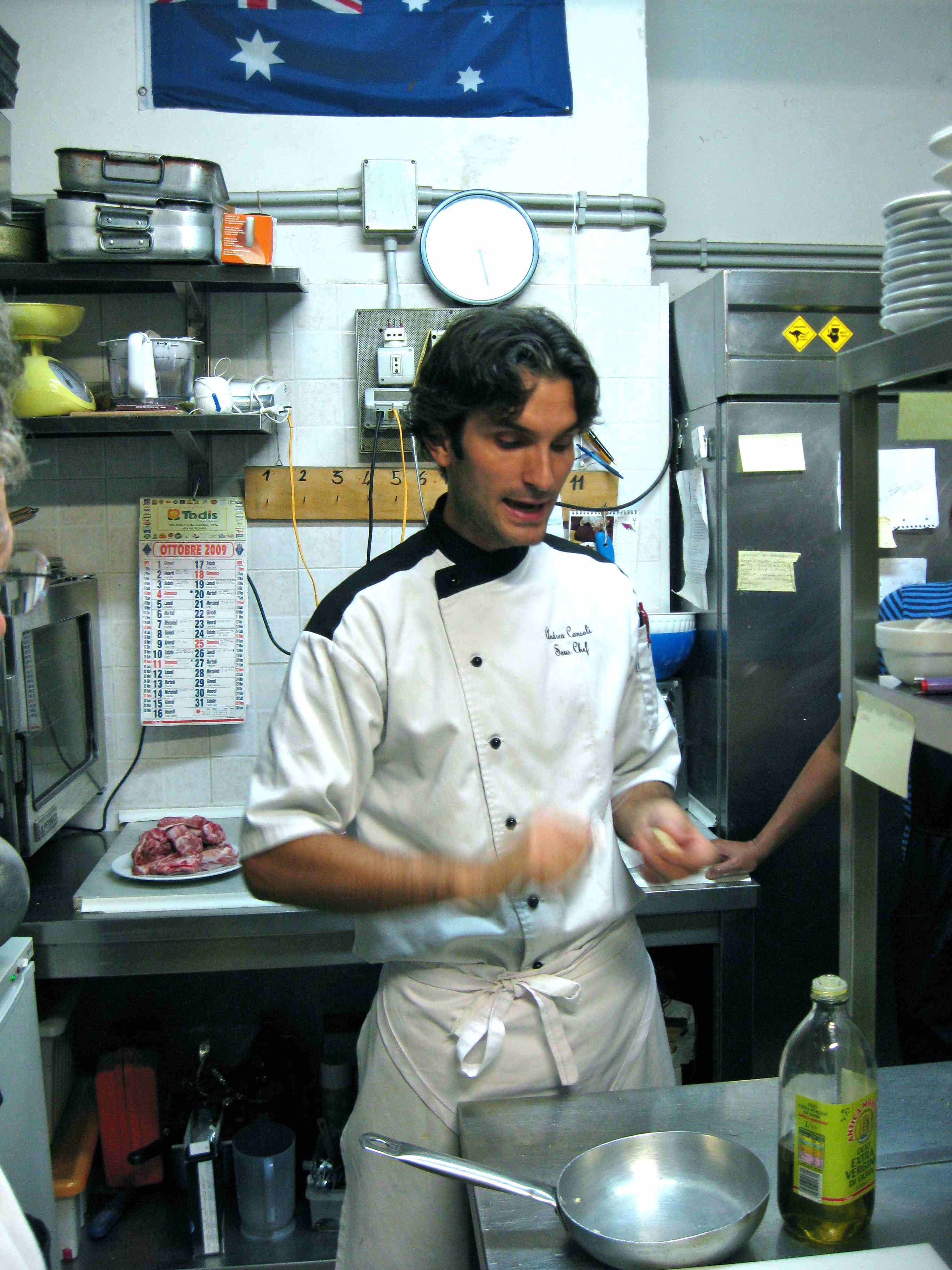
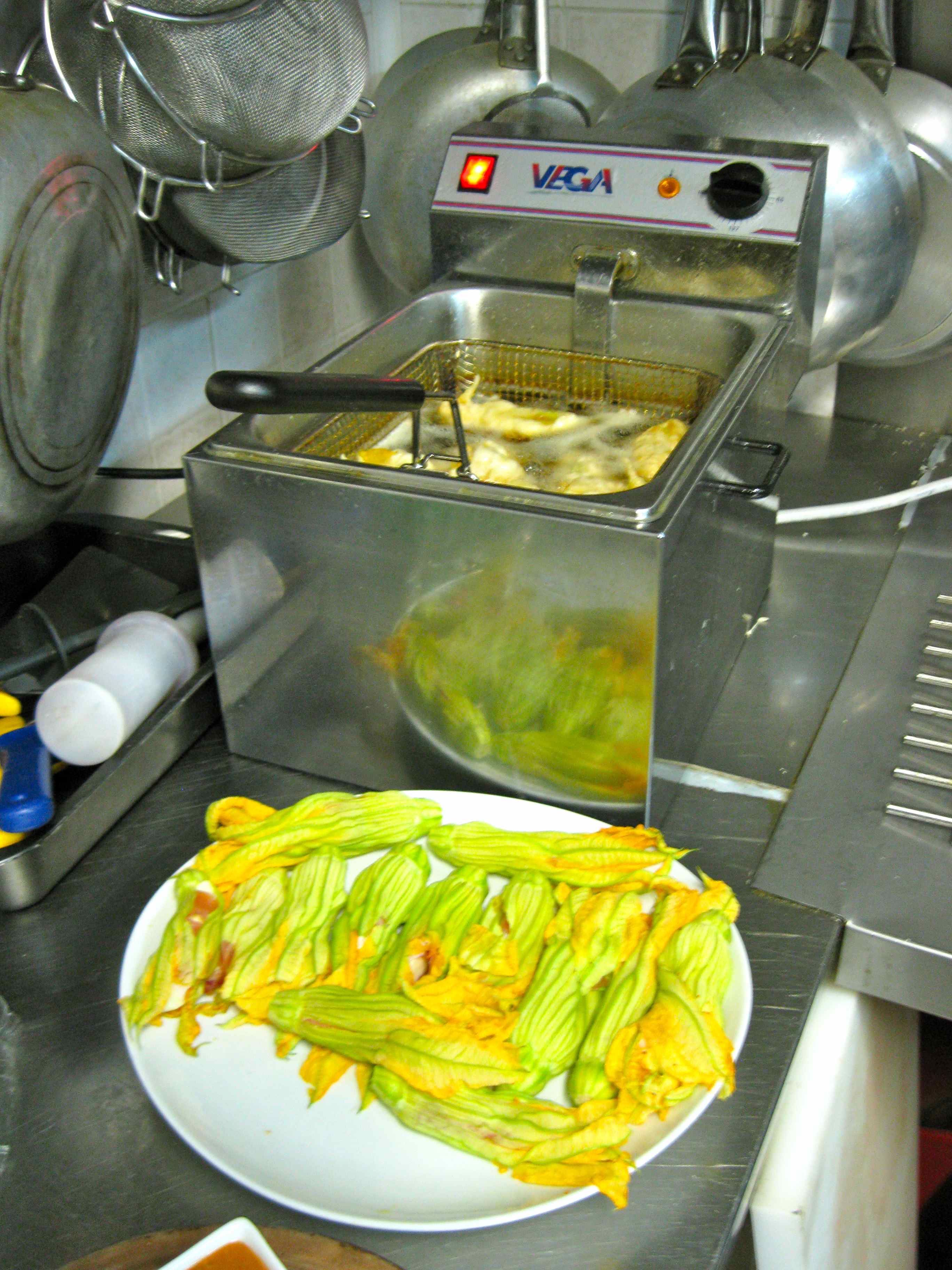
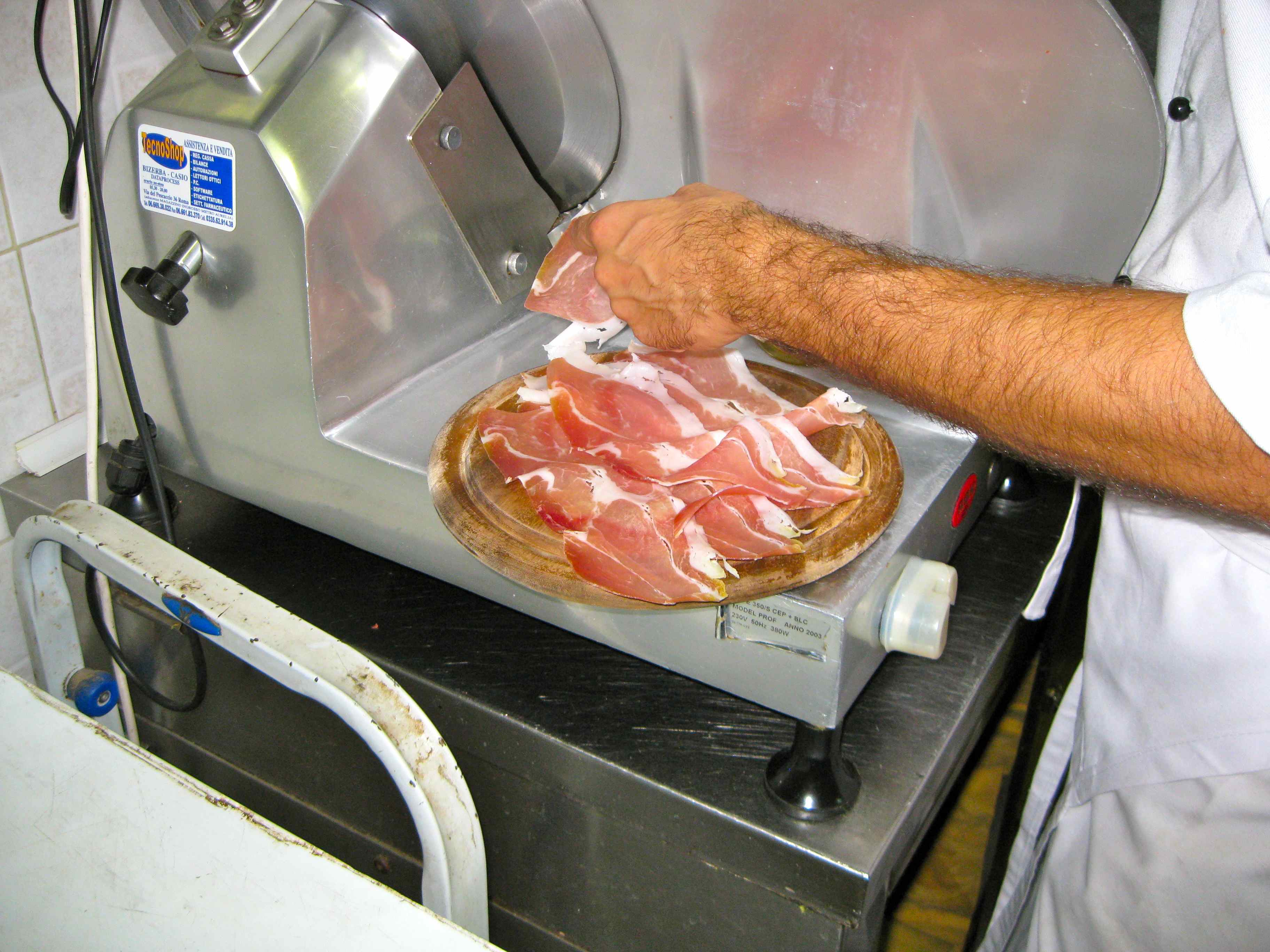
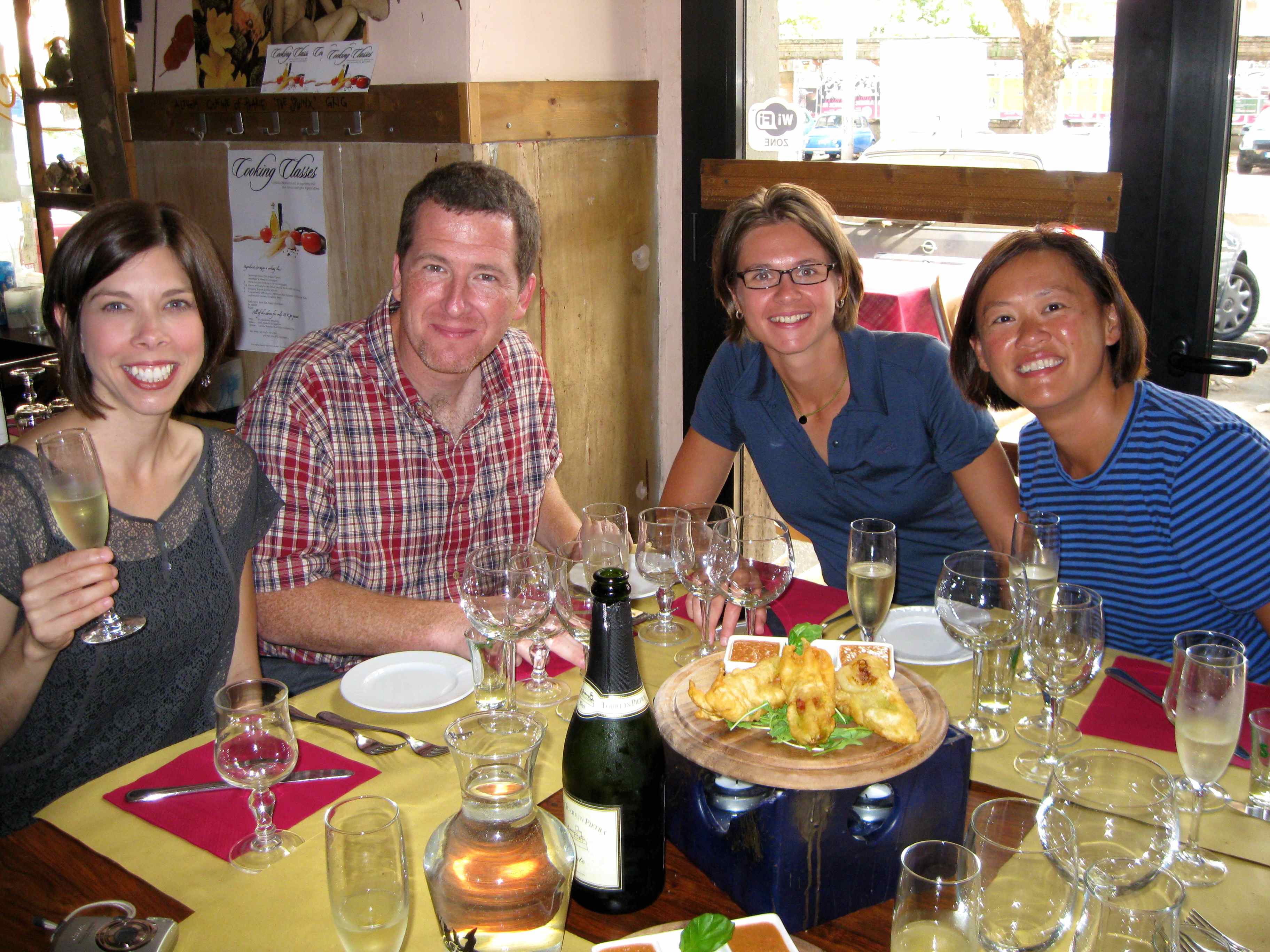
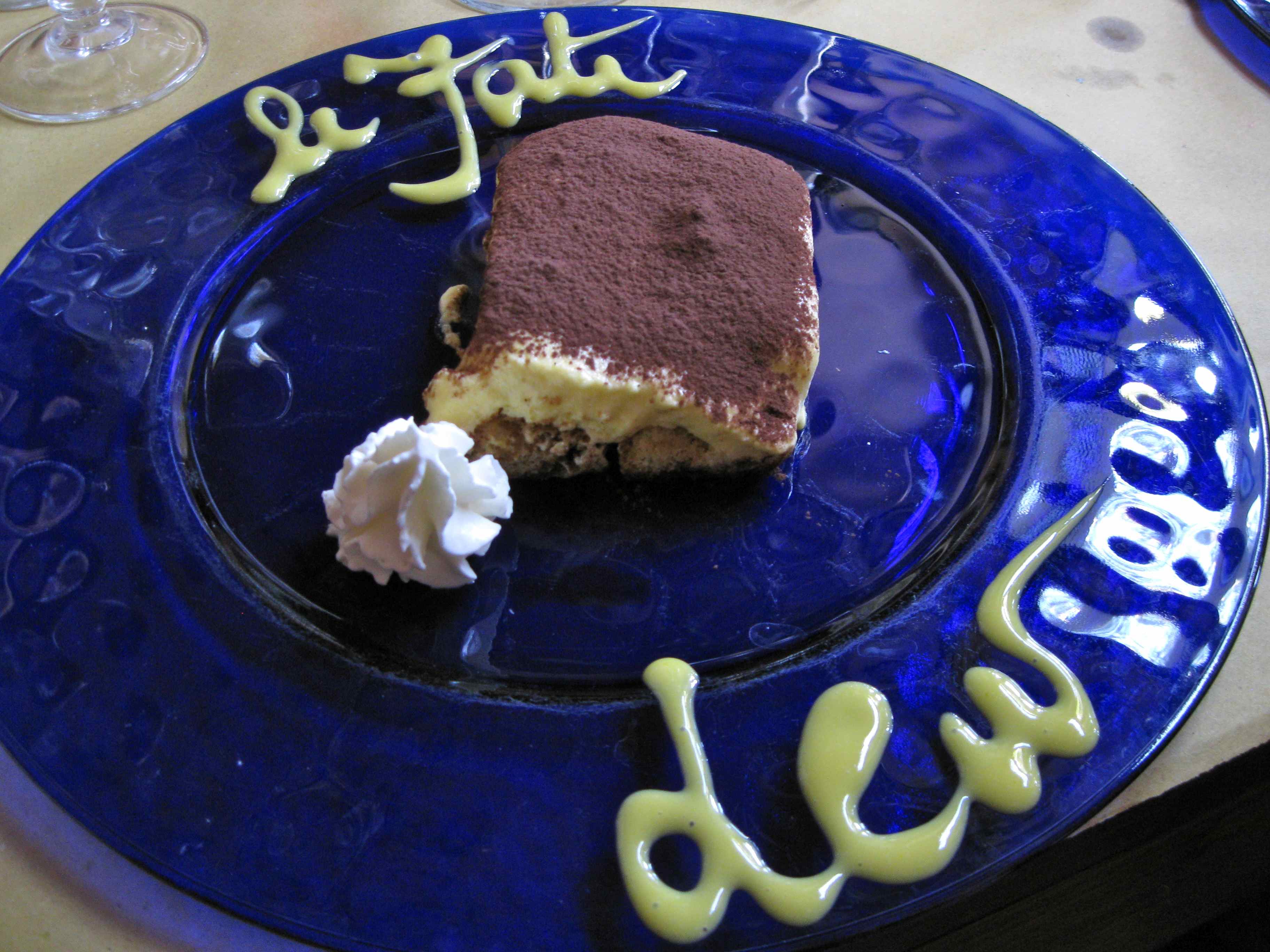
Add a Comment